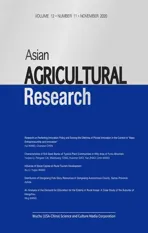Distribution of Dongxiang Folk Story Resources in Dongxiang Autonomous County, Gansu Province
2020-12-30Ashida
Ashida
Department of Chinese Language and Literature, Northwest Minzu University, Lanzhou 730030, China
Abstract Based on the field survey in Dongxiang Autonomous County of Gansu Province in 2017 and 2018, we found and obtained rich effective Dongxiang folk story resources. These first-hand story resources remain in relatively remote areas of the county, with elderly women in the Dongxiang Language Reservation Area in the central and east of the county as the main oral inheritance group. The distribution characteristics of folk stories: few people preserve most stories, while most people could not narrate complete stories, and few traditional story resources are widespread. At present, due to various reasons, the oral environment and inheritance status of folk stories in Dongxiang County is not optimistic, the survey is difficult, and the story resources are scattered, and there is a tendency to gradually disappear. Therefore, it is necessary to actively protect the existing Dongxiang folk artists and folk story resources, and to conduct digital sorting of these resources in time.
Key words Field survey, Dongxiang ethnic minority group, Folk story, Residual distribution
1 Introduction
As one of the top ten ethnic groups that believe in Islam in China, the Dongxiang people mainly live in the Dongxiang Autonomous County (hereinafter referred as Dongxiang County) of Linxia Hui Autonomous Prefecture in Gansu Province. Dongxiang County (103°10′-44′ E, 35°30′-56′ N), located in the temperate continent, with Suonan Town as the center, extends radially to mountain ridges and large ditches, and has fragmented loess plateau landform with undulating beams, ravines and gullies criss-crossing[1].According to the sixth census of China, the total population of Dongxiang County was 284 500, of which about 247 500 were Dongxiang people. The native language of the Dongxiang people is Dongxiang language, belonging to the Mongolian family of the Altaic language family[2], without written language. Due to the lack of direct and complete historical written records of its ethnic origin, the academic circle has not yet formed a consensus on the origin of the Dongxiang people[3], and the conclusion that the Salta is the main ethnic origin in several different interpretations[4]has been accepted by most researchers.
There are few achievements of Dongxiang folk stories officially published in common languages of other ethnic groups. In the process of inheritance and evolution, Dongxiang folk stories are integrated with the life and habits of their own people, and are also affected by the natural environment and social development, so there have been various changes. Due to the constraints of natural conditions on cultural dissemination and the unique ethnic habits and religious beliefs of the Dongxiang people, the preservation degree of their folk stories is relatively complete. Despite influenced by history and social development, the Dongxiang people still maintain their own unique cultural customs and living habits. Therefore, collecting the existing folk stories of the Dongxiang people and studying their oral inheritance environment have important theoretical value and practical significance for rescuing and protecting their culture, especially the intangible culture.
2 Relationship between the present situation of Dongxiang County and the distribution of its folk story resources
Dongxiang County has a temperate semi-arid continental climate with many mountains and loess ravines and gullies. Most areas are arid and rainless, and it is not suitable for large-scale planting and agricultural industries. Therefore, the traditional small-scale farming economy is the basic livelihood mode of local residents. The complex geographical environment and the traditional ethnic agriculture have resulted in traffic inaccessibility and difficulty for external information to flow into this area, which provides a natural barrier for the preservation of the traditional culture and folk stories of the Dongxiang people. Oral literature and folk stories of the Dongxiang people become part of the resources that have been preserved or passed on in such natural geographical environment.
The Dongxiang people have no written language and have not formed a documentary basis for a unified national writing system to record and pass on folk stories and other culture. The application of the independent customary law of the Islamic community[5]also protects its traditional culture to a certain extent. Most areas of Dongxiang County still rely on relatively simple traditional mountain fragile agriculture as the main source of income, leading to long-term closure of some mountainous areas, underdeveloped economy, and slow modernization. These have played a certain role in the preservation and inheritance of traditional social culture, and have preserved rich folk story resources in the form of collective memory.
In the context of China’s social development and the development of ethnic regions, both the Dongxiang ethnic region and traditional culture also have been significantly affected by the rural reform and opening-up, western development, and rapid market economic development. The areas along the river valleys in the east and west of Dongxiang County and the southern part of the county have relatively developed traffic. Due to the advantages of the environment and resources, they were developed earlier and communicated relatively frequently with the outside world. Their culture and education have been continuously integrated with other ethnic groups in the development process. However, these restrict the mother tongue usage rate of most Dongxiang people in the above-mentioned areas. As a result, only few people can dictate folk stories in Dongxiang language. What’s more, with the rapid development of local economy, modern media and bilingual education, the popularization of Chinese language has brought about a large degree of regional social changes in these culturally intermingled areas. The changes in the cultural education and customs of the young generation are indirectly aggravating the decrease, variation, and disappearance of ethnic folk stories of Dongxiang people.
3 Field surveys of folk story resources of Dongxiang County and their residual distribution characteristics
3.1FieldsurveyoffolkstoryresourcesofDongxiangCountyIn summer and autumn of 2017 and 2018, we carried out field surveys and collected folk stories in Dongxiang County through inquiries and visits, special interviews, and household interviews, we interviewed local farmers, folk artists and related staff.
First, according to the survey and research of Ma Rubiao and Ma Zhaoxi, based on the knowledge and popularization of mother tongue by Dongxiang people in Dongxiang County, we divided Dongxiang County into three types of areas, namely: preservation area, residual area, and conversion area[6]. Since the dissemination of folk stories needs a suitable oral environment, we focused the preservation area with the highest Dongxiang language penetration rate in the field survey.
Second, we carried out interviews and inquiries and interactive surveys in the residual and conversion areas where the Dongxiang language is not used very frequently. Through two field surveys over a period of six months, we collected a total of 392 oral folk stories, including 264 effective story resources. We found that the distribution, preservation, and residual distribution of Dongxiang folk stories are associated with their natural living environment, ethnic customs, religious beliefs,etc., and are also influenced and changed by the development of modern society, and the preservation of mother tongue largely affects the preservation and inheritance of folk story resources.
Positioning survey can be divided into two types: obtaining effective story resources and not obtaining any story resources. In the first type of survey, we visited a total of 15 towns and villages. Among them, 11 townships and 36 villages, we obtained effective story resources (the circles in Fig.1 and Table 1), and we interviewed 60 folk artists and local farmers in Dongxiang language at 54 interview sites, and collected above-mentioned effective folk story resources, we kept them in audio or video form. Based on the GPS positioning data and with the aid of the ArcGIS software, we made statistics of the distribution status of the folk story resources. The results show that in 8 of 14 towns in the preservation area, we obtained effective stories, accounting for 57% of the total resources obtained. In particular, in Dashu Township, Wangji Town, Longquan Town and Gaoshan Township, we obtained relatively more effective story resources, while Suonan Town, Fengshan Township and Beiling Township also have effective story resources. For 6 townships of the residual type area, in the eastern Dongling Township and Daban Town and the northern Kaole Township, we found scattered residual effective folk story resources. For 5 townships of the conversion type area, we obtained effective story resources only in several towns, such as we collected two stories in Tangwang Town. The latter type included the above-mentioned townships and towns that have obtained effective story resources, as well as Chuntai Township near Suonan Town where the county government is located, Yanling Township and the southern Nalesi Township and Guoyuan Township with relatively developed education and economy. In the survey, in 4 townships and 28 villages (diamonds in Fig.1), in 82 positioned interviews, 88 interviewees did not tell stories, and we did not obtain any effective story resources.
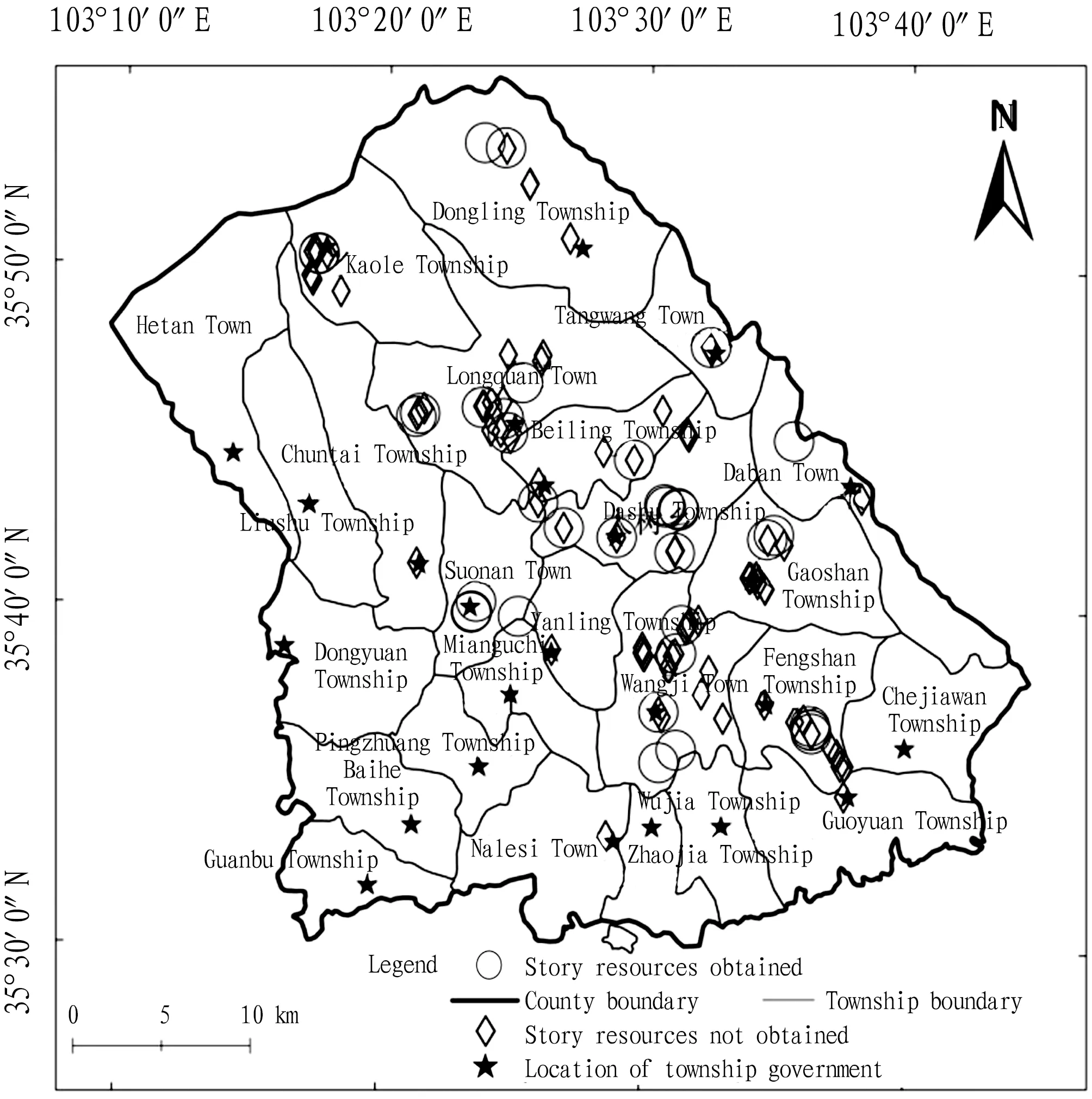
Fig.1 Distribution of the surveyed towns and folk story resources in Dongxiang County
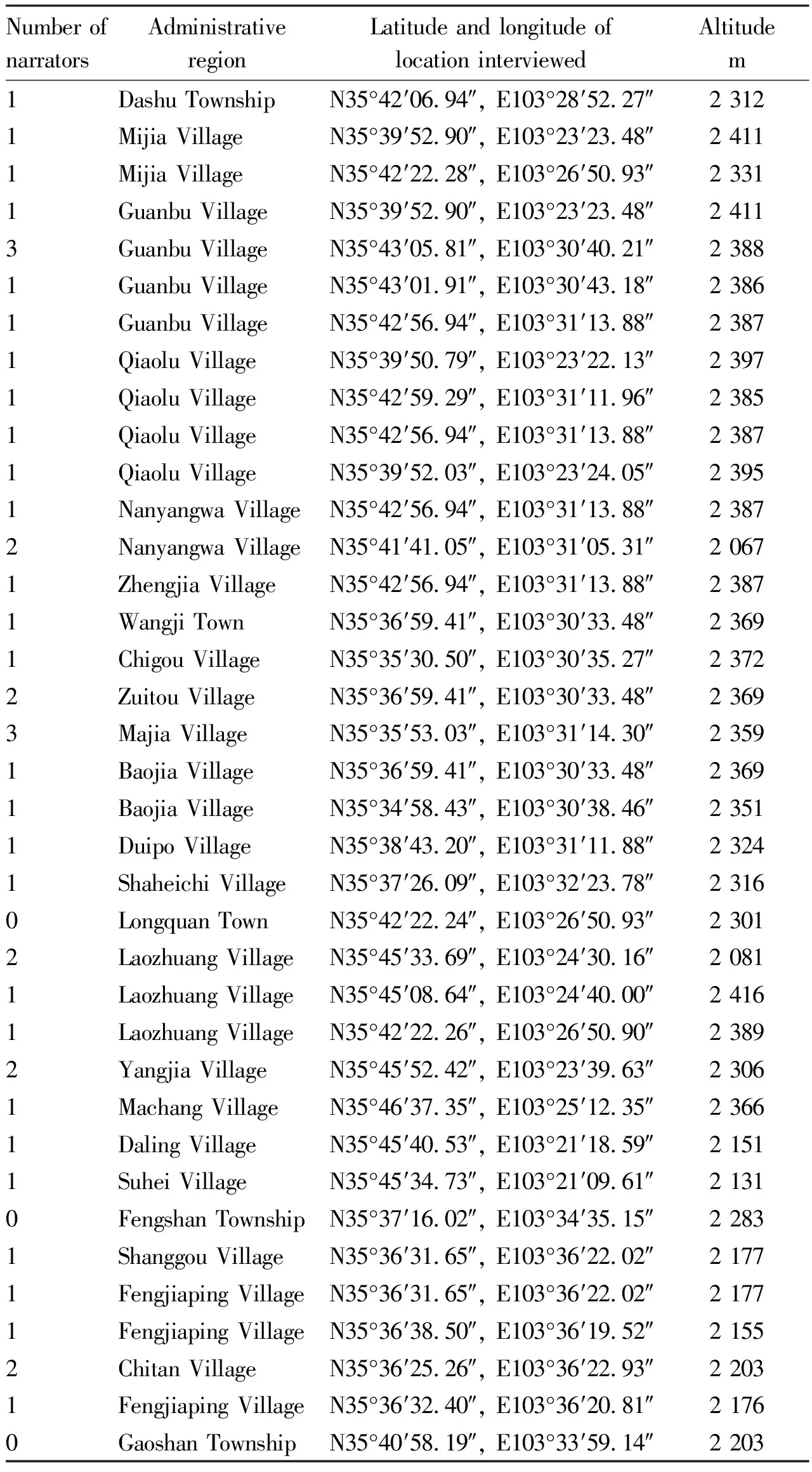
Table 1 Administrative regions where folk story resources were obtained and the location of interviewees
(To be continued)
(Continued)
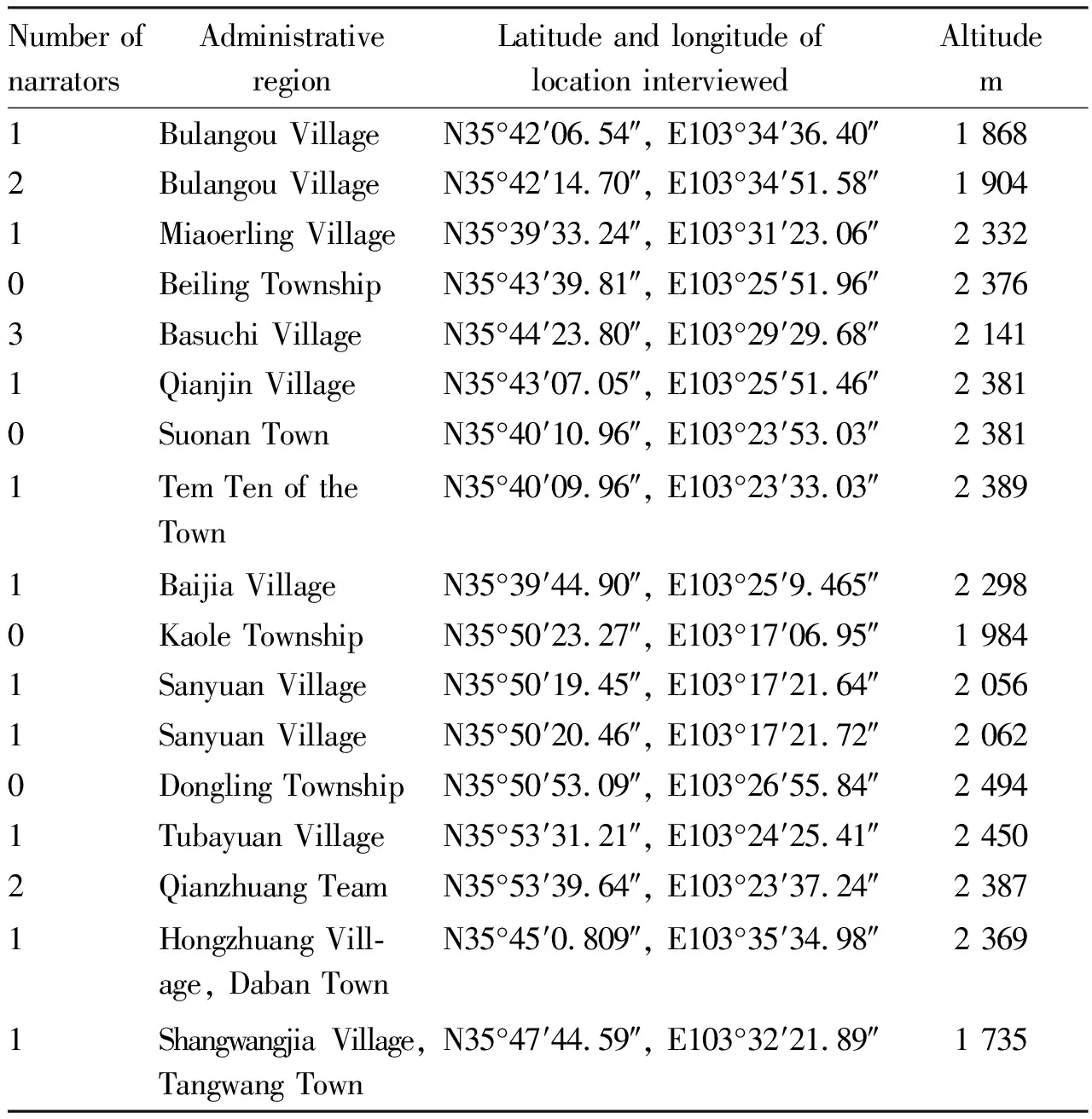
Number ofnarratorsAdministrativeregionLatitude and longitude oflocation interviewedAltitudem1Bulangou VillageN35°42′06.54″, E103°34′36.40″1 8682Bulangou VillageN35°42′14.70″, E103°34′51.58″1 9041Miaoerling VillageN35°39′33.24″, E103°31′23.06″2 3320Beiling TownshipN35°43′39.81″, E103°25′51.96″2 3763Basuchi VillageN35°44′23.80″, E103°29′29.68″2 1411Qianjin VillageN35°43′07.05″, E103°25′51.46″2 3810Suonan TownN35°40′10.96″, E103°23′53.03″2 3811Tem Ten of theTownN35°40′09.96″, E103°23′33.03″2 3891Baijia VillageN35°39′44.90″, E103°25′9.465″2 2980Kaole TownshipN35°50′23.27″, E103°17′06.95″1 9841Sanyuan VillageN35°50′19.45″, E103°17′21.64″2 0561Sanyuan VillageN35°50′20.46″, E103°17′21.72″2 0620Dongling TownshipN35°50′53.09″, E103°26′55.84″2 4941Tubayuan VillageN35°53′31.21″, E103°24′25.41″2 4502Qianzhuang TeamN35°53′39.64″, E103°23′37.24″2 3871Hongzhuang Vill-age, Daban TownN35°45′0.809″, E103°35′34.98″2 3691Shangwangjia Village, Tangwang TownN35°47′44.59″, E103°32′21.89″1 735
In addition, Guanbu Township, Baihe Township, Dongyuan Township, Liushu Township, and Hetan Township in the west and Chejiawan Township, Wujia Township and Zhaojia Township in the south of the county have relatively superior transportation and education conditions, frequent contact with the outside world, and richer and more diverse external information, the preservation of traditional language and culture is relatively low, the fluency of oral stories and the use of Dongxiang vocabulary in the process of storytelling are not ideal, the number of folk story resources told in the mother tongue is very small, and it is difficult to obtain effective story resources. For this reason, we did not conduct targeted survey in these areas, except for Chuntai Township, Yanling Township, Nalesi Township and Guoyuan Township.
On Christmas Eve I saw that my mother had outdone herself in creating a strange menu. She was pulling black veins1 out of the backs of fleshy prawns2. The kitchen was littered with appalling3 mounds4 of raw food: A slimy rock cod5 with bulging6 eyes that pleaded not to be thrown into a pan of hot oil. Tofu, which looked like stacked wedges of rubbery white sponges. A bowl soaking dried fungus7 back to life. A plate of squid, their back crisscrossed with knife markings so they resembled bicycle tires.
3.2DistributioncharacteristicsoffolktaleresourcesinDongxiangCountyMost of the towns and villages where the folk story resources of Dongxiang County are distributed have the common characteristics of complex topography, underdeveloped traffic, slow economic development, communication mainly in Dongxiang language, strong traditional customs and religious beliefs, while development of cultural education, the outward communication of young people, and the popularization of modern media also bring great impact on the environment of Dongxiang language that is without writing[7-9].
3.2.1Residual distribution of folk story resources and their story sources. From Fig.1 and Table 1, we can see that the regions where we obtained effective story resources are mainly distributed in the oblong area extending from Longquan Town to Fengshan Township, located in the topographically convex area of the Dongxiang County, and most of the points are located at altitude above 2 000 m and in the upper reaches of many small rivers. The radial distribution of mountains and ravines in Dongxiang County limits economic and transportation development to a certain extent, forming relatively closed natural conditions and a unique cultural space, but retaining the native tongue, traditional customs and oral inheritance culture of the Dongxiang people to the greatest extent. In consequence, these topographical areas have become a unique concentrated distribution area that keep relatively complete folk stories and traditional culture.
As shown in Table 2, among the narrators who told folk stories, the number of narrated stories, the number of narrators, age, gender, and the number of effective stories can be summarized as follows:
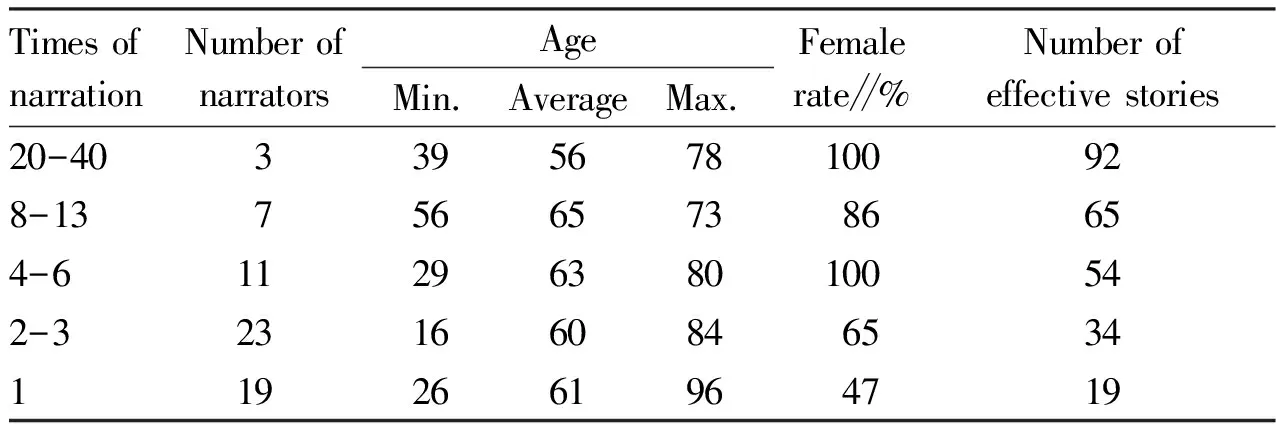
Table 2 General conditions of narrators
(i) The groups that can verbally and completely narrate many stories (20-40) in the survey take up only 5%, and all them are women. They are a precious group that can fully remember the traditional story and keep it to this day. Their mastery of the stories and the grasp of the specific story plot are relatively complete, the narration process is smooth without difficulty, the expression and tone are rich and vivid, but the number of this group is very small and their living is scattered.
(ii) The people who grasped well the main plot and process of the stories and could clearly narrate the motif accounted for 11% (8-13 people), mainly elderly women and a very small number of elderly men. This group has become the representative of the oral inheritance of Dongxiang folk stories, but its population is small and scattered.
(iii) People who could narrate several complete stories (4-6) are mostly elderly women and very few young women, accounting for 17%. Among them, the elderly basically could narrate the general framework of the story with their early memories of listening to the story, but the plot is not very complete. Although this group of people have memory retention or could narrate stories, the original intent of their stories is not complete, and the number of stories they can tell is relatively small and unevenly distributed. Therefore, this group of people basically belongs to the oral inheritance retainers of the existing story resources of the Dongxiang people, but is also an important intermediate group for story preservation and inheritance.
(iv) 37% of the people who could narrate two or three stories are composed of the elderly and a very small number of young people. Among them, more than half are women and their distribution is quite scattered. The proportion of storytellers is high, but the quality and quantity of oral narration are not ideal. This group shows that the scattered and remaining representatives who use their mother tongue to narrate the folk stories of their own ethnic group are also likely to become the final people of the oral inheritance history of Dongxiang folk stories.
(v) Those who could narrate one story accounted for 30%, less than half of them are women and scattered, mainly composed of some elderly women and very few young people who memorize stories by rote. The degree of inheritance is low, it is in a state of generation breaking, and it can even be said that the final group of people of the story disappearance.
4 Existing characteristics of the residual folk story resources in Dongxiang County
According to the grading of the number of effective stories collected, we sampled 9 narrators (Table 3), and divided their oral stories into 4 categories: rich (F), many (D), few (S), and rare (X), and then analyzed the number of narrators and their specific stories, and the repetitive oral relationship between different categories. The people sampled belong to 2 of F, 4 of D, 2 of S and 1 of X. They told a total of 68 stories, some of which were also narrated by other categories of people and the total number of oral stories was 118; the total number of narrations and repeated narrations of all the samplers was 158 times. Specifically, F Female 1, including its repeated narrations, narrated 79 times (accounting for 50% of all oral stories), F Female 2 narrated 24 times (accounting for 15%); the remaining other seven people including D female 1 and S female 2 and D, S, X narrated 35% stories, as listed in Table 3.
In Table 3, each story of number 1-5 was repeated by 7-8 narrators, indicating the story resource has a large influence, highly reflecting regional life customs, and strong inheritance ability and characteristics, and a relatively wide range of distribution. The amount of repetition of these stories in different categories of narrators accounted for 30% in 118 narrators, but accounted for only 7% of the 68 story types that have been sampled, showing that the story resources are few; its traditional influence is relatively large, and it proves that its extensive story resources are relatively poor.
In Table 3, the stories of number 6-9 were repeated by 3-5 narrators. Prominent stories include Milagahei, Frog Grandson, Ga Grandson, and Cannibal Grandma and Seven Sisters, with times of narration accounting for 12% and number of story types accounting for 5%, showing certain influence and traditional characteristics, but their distribution concentrated in remote areas.
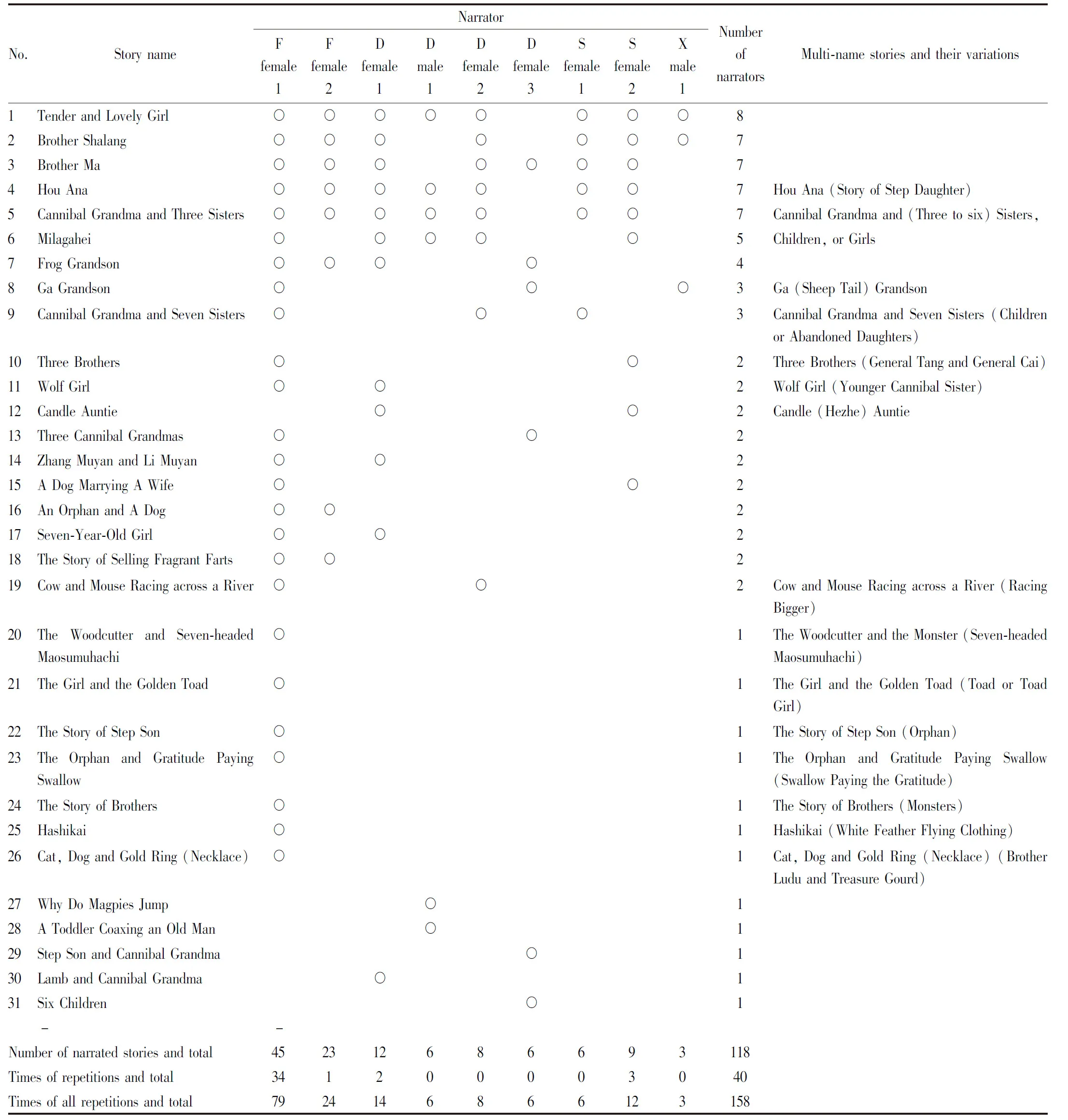
Table 3 Number and characteristics of story resources sampled and analyzed
Stories narrated two times accounted for 15%, and number of story types accounted for 13%; the traditional characteristics of these stories are not distinct, and their preservation area is small and scattered, and some stories have undergone certain variation.
For the story resources individually narrated but not repeated, F females are the major ones, and F females 1 and 2 respectively have two types of story characters that keep traditional characteristics and a tendency to change; F female 2 lives outside Dongxiang County, and the stories she narrated have a certain variation or cross characteristics. Among the remaining 7 narrators (categories D, S, and X), some different story resources appeared in the stories with D as the core and their own individual narratives, such as "Why Do Magpies Jump", "A Toddler Coaxing An Old Man", "Step Son and Cannibal Grandma", "Lamb and Cannibal Grandma", and "Six Children",etc.
The above analysis of the present situation of the story resources shows that the Dongxiang people’s traditional folk story resources are relatively rich, and the preservation of individual stories is relatively complete, but the amount of inherited existing stories is constantly declining; the distribution is small or scattered. The plots of most of the story resources reflect the Dongxiang people’s life habits or folk custom characteristics, cultural development, family status and value characteristics of outlook on life.
In Table 3, the stories with greater influence and more repetitions, although relatively large in number, have a small number of story types and the traditional inheritance characteristics are not clear; most of the young and middle-aged and males of the Dongxiang people know some folk story names, but seldom can narrate 1-2 stories completely, let along telling their folk stories in Dongxiang language.
The existing characteristics of folk stories of Dongxiang people can be summarized as follows. (i)The existing traditional folk stories are basically preserved by some elderly women, and their completeness is uneven. (ii) There are many stories (such as Cannibal and Four Sisters) that reflect the characteristics of women and their intelligence and wisdom, indicating that the value of women has always been very important. (iii) Stories telling children and their life (such as Six Children, Candle Auntie, Toad Girl) are distinct, and there are stories reflecting living status of women and children (such as Two Daughter-in-laws, and Step Daughter and Tooth Cellar Digging). These stories can manifest social status of women and children of Dongxiang people. (iv) The stories reflecting the great men and their variation (Hashikai, General Tang and General Cai) are also preserved, which is related to the exchange and penetration of other ethnic groups during the development process. (v) There are also stories explaining animals and their interest (Tigers and Rabbits, Why Do Magpies Jump). (vi) There are also stories that reflect other things and the state of variation (the stories of Jiang Ziya and Li Liang, The Golden Calf, and The Story of Pot Leaking) are also scattered.
In summary, the folk story resources of Dongxiang County are only preserved among middle-aged and senior women. Men and young people rarely have complete story memories or cannot narrate folk stories in Dongxiang language. There are not many types of widely spread stories, the traditional inheritance is small, and the phenomenon of variation and disappearance is obvious. Therefore, the possibility for most Dongxiang people to pass on folk stories through their native language has been gradually declining. Except for the above-mentioned groups, most Dongxiang people cannot narrate complete folk stories. They can only recall some typical sentences or the plot, only have vague memories of the name of the story, or answer in pieces in Chinese.
5 Reasons for the residual distribution of folk story resources in Dongxiang County
5.1NaturalenvironmentalconditionsThe effective folk stories of Dongxiang people are relatively concentrated in the middle and east of the county. Due to the complex topography and landforms and the developed loess gullies, the vegetation is sparse, the soil erosion is serious, the ecological environment is fragile, and traffic is blocked; in addition, the climate is arid, the frequency of disasters is high, the sunshine is abundant, and the temperature difference is large[10].These natural conditions limit the scale of agricultural development, economic culture, and ethnic migration in Dongxiang County[11]. As a result, these provide natural environmental conditions for preservation and distribution of surviving folk stories in Dongxiang language.
5.2HumanfactorsThe effects of human factors on the survival, variation and disappearance of Dongxiang County’s traditional culture and folk stories are complicated, including ethnic languages, education, customary laws, religious beliefs, women’s lives, economy, and poverty.
5.2.1Minority language. The Dongxiang people have no written texts and only pass on their national culture and folk tales in the oral manner. In Dongxiang language, the proportion of Mongolian vocabulary is close to 60%[12], followed by Chinese loan words. In an environment where there is language but no written words, it is very difficult to pass on folk stories only relying on a single traditional oral form. In addition, the Dongxiang people are influenced by Chinese-based communication and a large number of multi-cultural influences of modern media[13], which not only challenges the form of oral inheritance of Dongxiang language, but also makes the environment of oral inheritance gradually disappear. Only middle-aged and elderly women who understand Dongxiang language can tell stories. Most men and young people have very little memory related to the content of the story.
5.2.2Education. The education status of minors is not standardized. Since the reform and opening-up in rural areas, the Dongxiang people generally have low enrollment rates and high dropout rates for school-age children. The education environment for Dongxiang girls is particularly worrying. Because of having to get married, or doing other jobs too early, and assuming corresponding social roles, the girls of Dongxiang people are less educated; the survey found that the fifth to eighth grades of elementary and junior high school students are peak stage of dropout. Besides, in the teaching practice, if often ignores the diversity of ethnic minority cultures and the inconsistency of education and cultural inheritance points[14]and the conflict between the implementation of Dongxiang people education and the bilingual teaching[15-16]. In addition, the survey found that many people are "ashamed" to tell stories. For traditional folk stories, most local people think that they are "children", "deceptive", "superstition", "things of the old society",etc.; there is problem of lack of the enlightenment and educational significance of folk stories, especially fable stories.
5.2.3Customary law. Customary law has become a supplementary form of the unwritten regional laws of the Dongxiang people, especially its private areas such as living customs, marriage and family, funeral ceremonies and functions constitute an important part of cultural transmission[17]; Liu Shunfeng analyzed the customary laws in myths, ballads, folk narrative poems and proverbs[18]and proved that traditional laws within the society are also preserved and passed on in folk stories.
5.2.4Religious beliefs. There is a close relationship between religion and culture, especially in the small traditional culture of the Dongxiang people. Religion penetrates almost all aspects of life and becomes the core of its culture. We can see their inheritance of Islam from the folk art, oral literature, and educational mode of the Dongxiang people[19]. Therefore, as an oral folk story, culture is closely related to Islam, and most of the stories contain Islamic customs. In addition, the Dongxiang people also have a special "worship and prayer", which is a religious revelation story (apart from the Islamic religious story) of the Dongxiang people, with full and deep meaning plot.
5.2.5Women’s life. The residual distribution of the folk story resources in Dongxiang County is inseparable from the contribution of middle-aged and elderly women. In the past, including some parts of Dongxiang County now, women were still in the closed social circle of the small-scale peasant economy, and they were rarely in contact with the outside world. Therefore, in the process of chatting with each other or taking care of their children, women repeated and disseminated folk stories many times, in which some women have played an important role in the preservation and development of folk stories. The living conditions of Dongxiang women include economic, political, and cultural aspects. Due to the backwardness of the regional economy, the influence of the combination of the changes in Islamic culture and traditional Confucianism, and the low overall education level, women’s family and social status is low, in addition to the discriminate against women, the female are difficult to have autonomous behaviors or independent thoughts[21]. In consequence, Dongxiang women become a vulnerable group[22].
5.2.6Economic situation and poverty. The impoverished environment leads to the lag of cultural and spiritual life. Among the many factors of the poverty situation in Dongxiang County, the natural environment, institutional factors, local poverty culture and overall social consciousness[23]have largely contributed to the lagging development of the primary and secondary industries. At the same time, the slow economic development also restricts the further development of Dongxiang culture. This series of effects presents the phenomenon of annual average sunshine determined by the proportion of employed population and environmental factors[24]. Therefore, the difference in the economic development of the Dongxiang people is one of the limiting conditions for the distribution of different levels of folk stories.
The above-mentioned factors lead to the survival, variation and even disappearance of Dongxiang folk story resources. Therefore, the oral environment, development conditions and audience situation of Dongxiang folk stories are not very optimistic. Among these, the most important thing is that the popularization of Chinese by the Dongxiang people is related to the gradual disappearance of the Dongxiang language, and even directly leads to the disappearance of oral literature and folk stories that use Dongxiang as the medium of communication. Of course, the influence of social, political, economic, and cultural development, as well as the lack of a fixed, unified, and standardized system of characters and phonetic symbols, are also the main reasons for the decline and even endangerment of Dongxiang language[25].
6 Conclusions
Despite the influence of the Dongxiang people’s isolation and independence of the natural and social environment, the constraints of customary laws, and traditional folk customs, the Dongxiang people still have kept relatively complete and diverse folk stories. The 264 effective story resources obtained in the field survey are precious data and wealth of the existing folk stories of the Dongxiang people. The type analysis and digital development of Dongxiang folk stories can even form one of the digital national heritage. Although the existing oral story resources have residual distribution, there is a significant phenomenon that the traditional preservation areas are decreasing or gradually disappearing from the open areas; people who keep these stories are mostly a small number of middle-aged and elderly women, and a very small number of young people and men. With the development of society, the form of oral inheritance of these traditional folk stories is restricted by various conditions, and it is difficult to continue, gradually showing an endangered state. In particular, under the influence of the modern information society, with the change in language and educational environment, the integration between the Dongxiang people and other ethnic groups, and the impact of the market economy, the distribution scope, oral inheritance, and transmission probability are greatly reduced, and the number of narrators of the stories is also decreasing year by year. The existing folk stories in Dongxiang County are generally residual, concentrated in areas with complex natural environments, relatively complete traditional habits, relatively little contact with the outside world, and underdeveloped economies. Folk stories are the carrier of language, and the folk stories of the Dongxiang people have gradually changed from an indispensable part of the traditional culture in the past to the "collective memory" of a small group of people, and they also tend to disappear.
杂志排行
Asian Agricultural Research的其它文章
- Resident Relocation of Wulingyuan World Natural Heritage Site Based on Community Participation Theory
- Exploration on Ecological Compensation Mechanism of Family Farm
- Comparison of Spatial Forms between Villages under Different Cultures in Jiangxi Province: Taking Meipi Village and Zhuqiao Village as Examples
- Characteristics of Soil Seed Banks of Typical Plant Communities in Hilly Area of Funiu Mountain
- Influence of Social Capital on Rural Tourism Development
- An Analysis of the Demand for Education for the Elderly in Rural Areas: A Case Study of the Suburbs of Hangzhou
